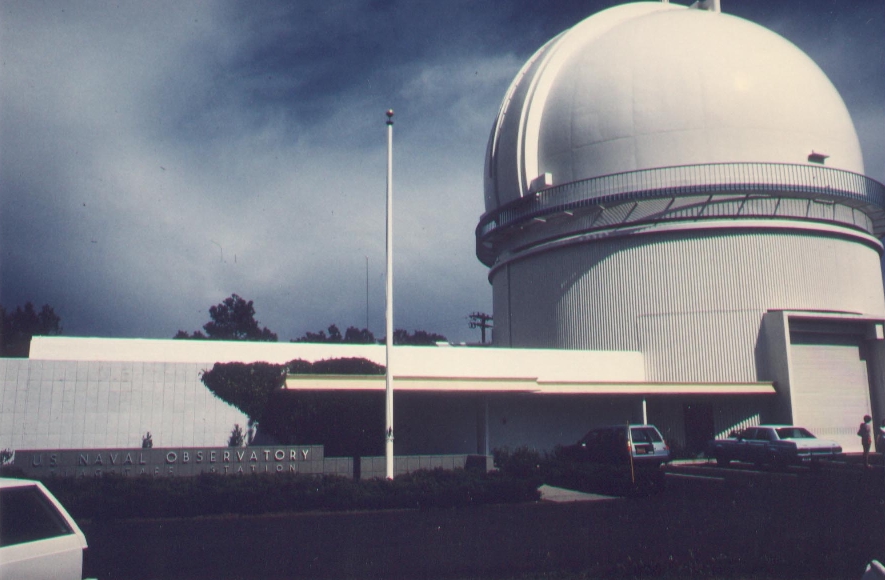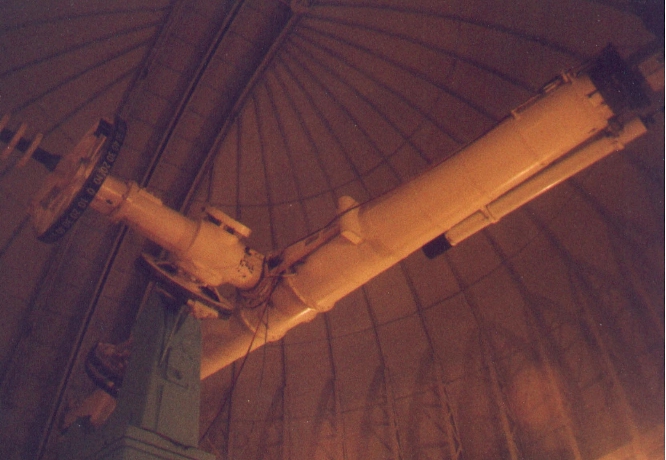

The US Naval Observatory has as a primary mission the support of time and reference frames as needed by Department of Defense activities. This also makes it a world center for precision astrometry and basic stellar data. The current location, to which the "Depot of Charts and Instruments" was relocated from aptly-named Foggy Bottem, features the classic 12- and 26-inch refractors, the latter being the instrument used by Asaph Hall to discover Phobos and Deimos. A USGS image (formerly from the Terraserver site) is shown below. The 12-inch refractor is in the central building, while the 26-inch instrument is in the separate dome to its northest (upper left).
 |
 |

Fleeing the light pollution (and typically Eastern weather, which is to say bad) of central Washington, the USNO also established a field station just west of Flagstaff, Arizona (visible from the proper lanes of I-40 as one drives by). The entrance is graced by some of the highest-altitude anchors in the country. The major instruments are 1-m and 1.5-m (shown at top) reflectors. The 1.5-m is interesting in using, not a Cassegrain optical system, but a folded prime focus arrangement with a flat secondary mirror. For controlling astrometric distortions, such a setup is valuable because there are fewer terms in the distortion that can be introduced by slight misalignment of optical elements than in a Cassegrain system, or a Ritchey-Chretien (of which the USNO 1m was one of the earliest examples). The Navy's Prototype Optical Interferometer (NPOI) at nearby Anderson Mesa is also managed by the Flagstaff astronomers.
Last changes: 11/1999 © 1999